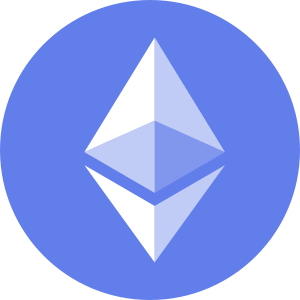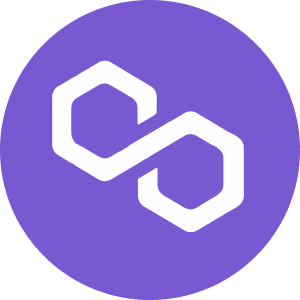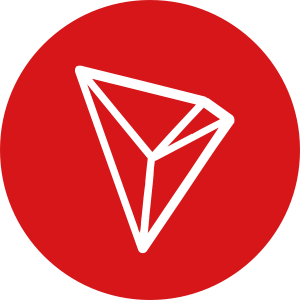Going public is the process when a company offers its shares to the public through the stock exchange for the first time, known as an Initial Public Offering (IPO).
By going public, a company can obtain additional capital from public investors who buy its shares.
The main advantages of going public are access to greater funding, increased credibility, and liquidity of shares for previous owners.
However, there are also challenges such as higher transparency, stricter regulations, and pressure from investors to maintain financial performance.
For investors, shares of companies that have just gone public can be an attractive investment opportunity, but are also risky due to price volatility at the start of trading. Here is a complete review of going public shares that you need to understand.
What is Going Public?

Going public is the process by which a company that was previously privately owned or owned by a group of individuals opens its shares to the public through an initial public offering (IPO).
With this step, the company becomes a publicly traded entity. Usually, companies decide to go public with the aim of raising funds that can be used for business expansion and development.
In addition, IPOs are often used by venture capital investors as an exit strategy to gain profits from the investments they have made in the company.
Company Requirements for Going Public
In order to be listed on the stock exchange, a company must meet various IPO criteria and requirements.
One of the main requirements is to have transparent financial reports audited by an independent institution to ensure accuracy and compliance with accounting standards.
In addition, the company must have promising business prospects and have been operating for at least three years.
The going public process also requires approval from capital market authorities, such as the Financial Services Authority (OJK) and the Indonesia Stock Exchange (IDX).
After the IPO, the company is required to comply with strict reporting rules and maintain transparency to the public and investors.
People Also Read: What is the Indonesia Stock Exchange? A Complete Trader’s Guide
The Go Public Process
After understanding that going public is the process of transforming a company from a private entity to a public entity, here are the stages that must be passed in this process:
1. Initial Preparation and Document Collection
The company needs to form an internal team and appoint external parties such as independent auditors and underwriters to assist in preparing for the IPO.
In addition, the company must obtain approval from the General Meeting of Shareholders (GMS) and adjust the articles of association.
Important documents such as financial statements, legal opinions, and financial projections must also be prepared to be submitted to the Indonesia Stock Exchange (IDX) and the Financial Services Authority (OJK).
2. Submission of Preliminary Share Listing Agreement to IDX
The company submits an application for share listing to IDX along with the required documents, including the company profile, financial statements, and business plan.
After the application is submitted, IDX will review and hold a meeting with the company and underwriter to present the IPO plan.
In addition, IDX also visits the company to ensure IPO readiness. If all requirements are met within a maximum of 10 days, IDX will provide in-principle approval in the form of a Preliminary Share Listing Agreement.
3. Submission of Registration Statement to OJK
After obtaining approval from IDX, the company must submit an IPO registration statement to OJK, complete with supporting documents.
OJK will then review the documents and may request revisions or additional information to ensure that all material data regarding shares, financial conditions, and company operations have been disclosed transparently in the prospectus.
Once approved, the company can proceed to the stage of publishing a summary prospectus, initial offering (book building), and public expose.
4. Public Offering, Listing, and Trading of Shares on the IDX
After permission from the OJK is granted, the company begins offering its shares to the public within a period of 1–5 working days according to IDX provisions.
If the demand for shares exceeds the amount offered, an allocation process needs to be carried out, and excess funds from investors who do not receive shares will be returned (refunded).
The distribution of shares is carried out electronically through the Indonesian Central Securities Depository (KSEI).
After that, the company submits a share listing application to the IDX by attaching evidence of an effective statement from the OJK, prospectus documents, and a report on the composition of shareholders.
After receiving approval, the IDX will announce the listing of shares and provide a stock code (ticker code) that will be used in trading on the exchange.
After the shares are listed, investors can start trading them through brokers or securities companies that are Members of the Exchange on the IDX.
Benefits of Going Public
Companies that decide to go public will gain various benefits that support their business growth. Here are some of the main benefits:
1. Access to Greater Capital
First, by becoming a public company, access to funding from the stock market becomes easier.
The funds obtained from the sale of shares can be used for various purposes, such as improving operations, paying debts, expanding, and acquiring other companies to expand the scale of the business.
This access to greater capital provides an opportunity for companies to grow faster than if they only rely on internal funding or loans.
2. Increased Credibility and Reputation
Status as a public company makes a business more transparent and accountable. Financial reports that are open to the public allow banks, investors, and other business partners to more easily assess the financial health of the company.
This can increase confidence in obtaining access to loans and make the company more attractive to potential investors and customers.
In addition, wider exposure in the media and analysis from securities companies also contribute to building a positive image.
3. Stock Liquidity
One of the main advantages of going public is increased stock liquidity. Shareholders, including early investors and founders, have more flexibility in selling or buying shares in the secondary market.
This allows shareholders to divest more easily if needed. In addition, the company’s stock price on the stock exchange can also be an indicator of business performance and investment attractiveness for other potential investors.
People Also Read This: Smart Ways to Play Stocks for Beginners on HP with Minimal Capital
Challenges of Going Public

Despite its many advantages, going public also brings a number of challenges that need to be carefully considered. Here are some of the main challenges that companies face after going public:
1. Complex Costs and Processes
The initial public offering (IPO) process requires large costs, including the costs of financial advisors, auditors, legal, and administrative costs to comply with applicable regulations.
In addition, companies must go through quite long and strict stages, such as preparing transparent financial reports, thorough audits, and the approval process from capital market authorities.
This process can take months to years before the company is officially listed on the stock exchange.
2. Higher Transparency
As a public company, transparency is a key aspect that must be maintained. Companies are required to submit financial reports and other material information periodically to the public and relevant authorities.
This can be a challenge for companies that were previously accustomed to operating in a closed manner, especially in maintaining a balance between openness of information and a business strategy that remains competitive.
In addition, every management decision will be under closer scrutiny from investors and regulators.
3. Stock Price Fluctuations
After going public, companies must be prepared to face stock price volatility in the market. Stock values ??can fluctuate depending on various factors, such as business performance, economic conditions, investor sentiment, and industry trends.
Sharp fluctuations can affect the stability of the company and even affect strategic decisions made by management.
Pressure from public investors can also cause companies to focus more on short-term results than long-term business plans.
Conclusion
Well, that was an interesting discussion about Going Public Stocks: What is it and How is the Process? which you can read in full at the Crypto Academy at INDODAX Academy, not only does it increase your insight into investment, here you can also find the latest crypto news about the crypto world
In conclusion, going public provides a great opportunity for companies to grow with wider access to capital, increased credibility, and higher stock liquidity.
However, this process also presents challenges, such as high IPO costs, strict transparency demands, and stock price fluctuations that can affect the stability of the company.
With careful preparation and a solid business strategy, companies can take advantage of the benefits of going public while facing existing challenges.
For the latest information, INDODAX will soon present a new feature that allows users to invest in stocks traded on the United States stock exchange.
This feature provides access to more than 50 stocks from the US market, allowing users to diversify their investment portfolios outside of crypto assets in the same account.
FAQ
1.What is meant by going public?
Going public is the process by which a company opens its share ownership to the public through an IPO for the first time.
2.What are the requirements for a company to go public?
The company must meet criteria such as transparent financial reports, have good prospects, and have been operating for at least three years.
3.How does a company determine the share price in an IPO?
The share price in an IPO is determined through a book building mechanism that involves offering a price to potential investors.
4.What are the advantages of a company going public?
Companies can gain access to more capital, increase credibility, and provide liquidity for their shares.
5.What are the challenges faced by companies when going public?
The main challenges include high costs, complex processes, and the obligation to be more transparent to the public.





 Polkadot 8.91%
Polkadot 8.91%
 BNB 0.54%
BNB 0.54%
 Solana 4.81%
Solana 4.81%
 Ethereum 2.37%
Ethereum 2.37%
 Cardano 1.35%
Cardano 1.35%
 Polygon Ecosystem Token 2.11%
Polygon Ecosystem Token 2.11%
 Tron 2.85%
Tron 2.85%
 Market
Market


